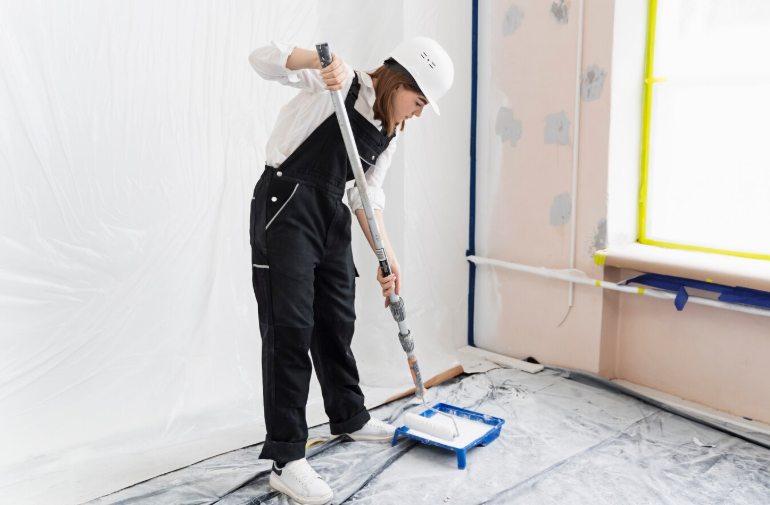Commercial painting is an essential investment for businesses looking to maintain, upgrade, or enhance the appearance of their property. Whether you’re painting a retail store, office building, warehouse, or restaurant, the cost of a commercial painting project can vary significantly based on several key factors. Understanding these cost drivers helps business owners plan budgets accurately and avoid surprises during the process.
While aesthetic appeal and branding are important, the true value of a professional commercial painting job lies in durability, compliance, and long-term protection of your property. Below are the major cost considerations when estimating a commercial painting project.
Size and Scope of the Project
One of the most obvious cost factors is the size of the building or surface area to be painted. Commercial properties often span thousands of square feet, and the total area will directly affect labor hours, paint quantity, and the need for additional equipment.
The complexity of the structure also matters. A simple one-story retail space will typically cost less than a multi-level office complex or a warehouse with exposed ceilings and metal beams. Projects involving both interior and exterior surfaces may double the workload and increase overall expenses.
For large-scale properties in the Twin Cities, working with an experienced commercial exterior painter ensures that cost estimates are based on accurate surface measurements and job scope.
Type and Condition of Surfaces
Surface material and its current condition play a significant role in determining project cost. Smooth, new surfaces are easier and quicker to paint, while older or damaged surfaces require extensive preparation before painting can begin.
For example, surfaces with peeling paint, mildew, or cracks may need sanding, power washing, patching, or priming — all of which increase labor and material costs. Brick, stucco, metal, and concrete each require different primers and coatings, and their preparation varies in complexity.
In commercial painting, surface prep is critical to ensuring a long-lasting and professional finish. Cutting corners during this phase can lead to peeling, blistering, or premature fading, resulting in higher costs down the road.
Type of Paint and Coatings
The quality and type of paint used will greatly impact the final cost. Commercial environments often demand specialized coatings that are more durable and resistant to wear, chemicals, or environmental exposure. Depending on your business type, you may require:
- Low-VOC or eco-friendly paints for health-conscious environments
- Anti-microbial coatings for hospitals or clinics
- Waterproof or mold-resistant products for humid areas
- High-gloss enamel for industrial durability
Higher-grade paints cost more per gallon, but they usually offer better coverage, require fewer coats, and last longer. The cost of coating also depends on the number of coats needed, the paint brand, and the color selected — some shades require more layers to achieve uniform coverage.
Accessibility and Building Height
The accessibility of the worksite is another critical factor that affects project cost. Painting a one-story storefront is far less complicated (and expensive) than painting a high-rise commercial building. Properties with multiple floors require lifts, scaffolding, safety harnesses, and sometimes special permits — all of which add to the project’s total cost.
Tight corners, hard-to-reach areas, or buildings located in high-traffic zones may require additional planning, labor, and equipment. These logistical challenges increase both the time and complexity of the project, making accessibility a major cost influencer.
Professional painting contractors with experience in handling multi-story buildings have the tools and team to manage such challenges efficiently. Choosing a reputable Painting Service ensures proper safety and execution on buildings of any height or complexity.
Labor Costs and Crew Size
Labor is one of the largest components of any commercial painting quote. Professional commercial painters charge either by the square foot or by the hour, depending on the job’s complexity. Rates may also vary based on regional wage standards, experience levels, and the painter’s reputation in the industry.
Larger projects typically require a bigger crew to meet deadlines, and specialized skills like spraying, stenciling, or line striping may cost more. If the painting must be completed outside regular business hours — such as nights or weekends — this too can result in premium labor charges.
Efficiency and speed are important in commercial projects, and hiring a well-staffed, experienced crew ensures that your timeline and quality expectations are met without unnecessary delays or cost overruns.
Project Timeline and Scheduling
The desired project timeline can influence the overall cost, especially if expedited services are required. If you need a fast turnaround for a grand opening, seasonal refresh, or compliance inspection, you may need to pay extra for priority scheduling.
Additionally, painting during off-hours to minimize disruption to business operations may increase costs due to overtime pay or after-hours labor rates. On the flip side, flexible scheduling during slower business periods can allow contractors to complete the job more affordably.
Reliable commercial painters understand the importance of coordinating around your business schedule and will factor this into their project planning and cost estimates.
Permits and Compliance
Some commercial painting projects, particularly those involving exterior updates or public buildings, may require permits from local municipalities. Compliance with zoning laws, environmental codes, or building maintenance guidelines may also add to your total cost.
Professional painting contractors are typically well-versed in local codes and can guide you through any permit applications or documentation required. They also ensure that paints used are compliant with health and safety standards, especially for commercial environments like schools, hospitals, and food service facilities.
Conclusion
The cost of a commercial painting project is influenced by several interconnected factors — from the size of the building and the complexity of surfaces to the paint type, accessibility, labor, and scheduling requirements. Understanding these cost components allows business owners to better plan, budget, and prioritize their painting needs.
Hiring experienced commercial painters ensures that every dollar spent contributes to quality, durability, and a professional finish. A well-executed commercial paint job not only enhances the appearance of your business property but also adds value, improves customer perception, and protects your long-term investment.

